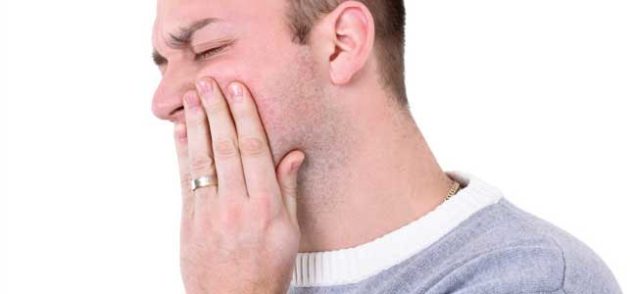
You hear advice everywhere you go. Brush and floss daily. Use mouthwash to fight bad breath. One out of every four dentists recommends using a Waterpik.
Dental health is very important, and as a consumer, there are a ton of options to pick from. To help make your dental hygiene routine easier, we’re going to cut through the noise with some simple suggestions about what a good routine looks like and what products you should consider using.
The Basics
We’ve mentioned this before—and so did your mom—you need to brush and floss daily. (In this case, she’s right.) However, you might not realize that to brush most effectively, timing matters! You should always brush your teeth before you eat breakfast. As you sleep, your salivary glands don’t produce as much saliva, enabling bacteria to grow and thrive. If you eat before brushing, more acid will be produced because of the overnight bacterial growth.
Not everyone can fit brushing in first thing every morning. If you do decide to brush afterwards, try to wait at least 30 to 60 minutes, especially if you consume foods that contain citric acid (foods like orange juice, grapefruit, lemons, etc.). The citric acid weakens your enamel and brushing your teeth afterwards can be more damaging than beneficial.
You only need to floss once a day. It doesn’t matter what time you floss, as long as you are doing it. If flossing requires too much dexterity, or you simply don’t like it, there are other options—but we’re not saying to give it up. If you can’t or just won’t floss, try alternatives like interdental brushes or floss picks.
Go Above and Beyond
Once you’ve mastered the basics of brushing and flossing, there are additional things you can do to make sure you have a clean, healthy mouth. Number one: mouthwash. Swish a little around your mouth and you instantly feel refreshed. But mouthwash can be more than just a mid-day pick-me-up, and different types of mouthwash have different benefits.
Fluoride: This mouthwash provides an additional source of fluoride. If you use toothpaste and drink tap water containing fluoride, you probably get enough. However, your dentist may suggest using fluoride mouthwash if they see some troubled spots.
Antiseptic: More commonly used, antiseptic mouthwash (like Listerine) kills bacteria. This will help with bad breath and the prevention of gingivitis.
Another tool you can use is the Waterpik. The Waterpik shoots a small, high powered stream of water that you can use along your gumline and in between your teeth. It can be useful if you have pockets or wider gaps between your teeth. While the Waterpik is a great tool, it still isn’t a substitute for flossing.
Note: If you have braces or other fixed items in your mouth, the Waterpik is especially valuable. Braces and fixed items can trap food next to your teeth for hours after eating, giving the bacteria in plaque a feast. After eating, use the Waterpik to clean out food that is stuck in your mouth. The Waterpik is also a great option for those who need to brush but may have just had citric acid in their meal.
Since the dental market is enormous, new products and methods will always be emerging. Always do proper research before buying an item or switching your routine. A good rule of thumb to follow is to see if the product is endorsed by the American Dental Association.
Remember, the best routine is the one you’re able to follow consistently. Routines will always be different depending on the person, so please don’t hesitate to reach out to Douglas B. Weber, DDS for more information on a routine that works for you.
More
Ouch! Maybe it’s a fresh smoothie, a spoonful of ice cream, or even just a sip of ice water—but there it is, throbbing tooth pain.
There are many reasons why you might be experiencing tooth sensitivity to cold. Fortunately, you can take several steps to remedy this yourself, including checking with your dentist.
Other symptoms often accompany sensitivity to cold, including:
- Sensitivity to hot foods
- Pain when biting or chewing
- Persistent dull or throbbing tooth pain
But what conditions cause these kinds of tooth sensitivity?
Exposed Roots
Tooth enamel, the hardest substance in your body, covers your tooth above the gumline. However, the root of your tooth, the part normally covered by your gums, does not have this protective layer. If you don’t brush and floss regularly—or if you brush and floss too vigorously—your gums may recede, exposing the roots of one or more of your teeth.
If you have exposed roots, the best course of action is to follow general oral hygiene. Continue brushing and flossing, but use a soft toothbrush and fluoride toothpaste specifically made for sensitive teeth. If the pain continues, though, make sure to see your dentist.
Tooth Decay
Small cavities can also become sensitive to cold food or drinks. Cavities occur in the enamel itself, and expose the nerve inside your tooth to cold, heat, and other sources of discomfort.
While you should continue flossing and brushing, you should see a dentist to diagnose and treat your condition. If the cavity is small, a dentist can remove the decayed area and fill the tooth. If it’s more serious, you may need a root canal to clean out the decay, disinfect the root, and seal the tooth.
Sensitivity after Dental Work
Sometimes dental work can temporarily cause your teeth to become sensitive to cold or hot foods, from a few days to a week or longer if you’ve had a filling or a crown placed.
In these cases, over the counter pain relievers like aspirin, acetaminophen, or ibuprofen should bring you relief. But if the pain persists or worsens, definitely contact your dentist!
How Can I Get Rid of Tooth Pain?
In general, you can address temporary tooth sensitivity to cold with the standard elements of good oral hygiene: regular brushing and flossing, as well as routine preventive care visits to your dentist. Consider using toothpaste specifically made for sensitive teeth or adding a fluoride mouth rinse to your daily routine.
However, if your sensitivity lingers, it could indicate that you have a more serious dental condition. The pulp—the interior of your teeth—could be damaged, either from long-term tooth decay or an injury. It’s important to see a dentist before you develop an infection that could put your tooth at risk.
If you have any concerns over increased or recent tooth sensitivity to cold—or heat— Douglas B. Weber, DDS is always here to help. Make an appointment and get your tooth checked out before it has a chance to turn into something more serious.
More
What You Need To Know:
The Effect Diabetes Has On Oral Health
Diabetes affects every aspect of your life. From ensuring your blood sugar is at the right level to keeping up with regular exercise, managing diabetes is no easy task. You must be aware of many complications that can arise from diabetes, and your oral health is no exception. Since it’s National Diabetes Month, we have provided information and tips to consider regarding the relationship between diabetes and your oral health.
According to the Centers for Disease Control, 29.1 million Americans have diabetes—and 8.1 million of those do not know they have the disease. If you’re not sure if you might have diabetes, the first step to taking care of your body is finding out if that’s the case. Some common symptoms of diabetes include:
- Blurred vision
- Hunger and fatigue
- Peeing more frequently while also being thirstier
- Dry mouth and itchy skin
More symptoms that can indicate longer term damage caused by diabetes include:
- Yeast Infections (for both genders)
- Pain or numbness in your legs and feet
- Cuts or sores that heal slowly
If you are experiencing these symptoms, go see your physician and get tested for diabetes. For your oral health, the symptoms take a while longer to show that actual damage that is occurring in your mouth if left untreated. Keep notice for symptoms like:
- Puffy, swollen gums that bleed when brushed or flossed
- Loose teeth
- Bad breath
- Receding gums
These are all signs of gingivitis, which if left untreated, can turn into periodontitis.
How does diabetes contribute to gum disease?
There are a few major ways diabetes affects your mouth. First, if your blood sugar levels are left unchecked, the glucose level of your saliva rises. Glucose is a type of sugar, and bacteria loves sugar, which will speed up the progress of gum disease. Second, with diabetes, your blood vessels thicken, making it harder for them to deliver oxygen and nutrients, as well as to take away waste. Lastly, a symptom of diabetes is dry mouth. Saliva helps keep the bacteria from sticking to your teeth, and a lack of saliva makes it easier for plaque and tartar to develop.
How do I prevent gum disease caused by diabetes?
- Control your blood sugar levels. This is done in many ways, such as taking insulin injections, eating different foods, exercising, and visiting your physician regularly.
- Brush and floss every day — This advice may seem obvious, but it’s tried and true. Removing plaque from your gumline and stimulating your gums are an excellent way to prevent gum disease.
- Visit your dentist for teeth cleanings — If you don’t have signs of gum disease yet, stay up to date on your regular teeth cleaning every six months. If you do have gingivitis or periodontal disease, a deeper clean will be required to prevent further tooth damage.
Whether you have diabetes or not, it is still very important to take care of your mouth. Recent studies have shown that not only are people with diabetes more likely to be afflicted by periodontal disease, but people with periodontal disease are more susceptible to getting diabetes as well.
While diabetes and periodontal disease can affect your quality of life, if treated early and often, you can mitigate much damage caused by these diseases. Call (661) 952-7865 to see how we can help today.
Sources:
http://www.diabetes.org/living-with-diabetes/treatment-and-care/oral-health-and-hygiene/diabetes-and-oral-health.html
http://www.diabetes.org/living-with-diabetes/treatment-and-care/oral-health-and-hygiene/warning-signs.html
http://www.mouthhealthy.org/en/az-topics/d/diabetes
More
By admin
01 Nov, 2016
Dental Health, Dental Tips, General Dentistry, General Health, Lifestyle, Oral Health, Preventive Dental Care
flossing, flossing alternatives, interdental brushes, waterpik
Flossing: In or Out?
It’s been six months since your last teeth cleaning. You arrive at your appointment and get called to head to the back by your hygienist. As she begins cleaning your teeth, she asks the question we all dread. “How often do you floss?” If you’re like many people, you might stretch the truth, or justify telling a white lie since you DID use a toothpick after dinner a few nights back.
Maybe now—lucky you!–you won’t have to answer that question any longer. Just recently the USDA and Department of Health and Human Services stated that flossing has been not been proven to be effective, and removed it from their dietary guidelines.
Well, slow down, my friend. You’re not off the hook just yet.
While this bold statement is technically true, there are still a few things to consider. First, the guidelines don’t say that flossing is bad or ineffective; they’re just saying there isn’t enough evidence in studies to prove it does help. The difference may feel like a matter of semantics, so for your own peace of mind, ask any dentist if you should floss. But you probably already know what their answer will be.
Your teeth consist of five surfaces, and brushing your teeth will hit all but two. Flossing will take care of the two remaining surfaces (the surfaces between your teeth) and ensure that plaque does not become tartar, which eats away at your teeth and gums. While flossing can help prevent tooth decay, a study by the Central for Disease Control shows that only 30% of the U.S. population flosses daily.
If you’re one of the 70% of people who don’t floss daily, you should know there are many alternatives to floss out there that can be just as effective in cleaning between your teeth.
Interdental Brushes – These are little brushes that you used to brush in between your teeth. People find these much easier to use than floss, and are good for people who have braces or larger gaps between their teeth.
Waterpik – The waterpik shoots a small, strong stream of water that can fit between small crevices in your teeth. It’s great to use for washing away plaque that can gather in pockets, but can take more time to master than floss or interdental brushes.
Floss Picks – A floss pick is a small piece of floss attached to a handle. These have become popular in recent times due to how convenient they are to use, but there are a few things to consider when using them. Since the floss is attached to a handle, manipulating the floss to hit all of the surfaces of your teeth can be difficult. Additionally, the recommended amount of floss to be used in a session is 12-18 inches, and the typical floss pick is only about two inches. Consider using more than one floss pick per session.
Regardless of what technique you use to clean between your teeth, the overall consensus is that anything is better than nothing.
Have a difficult time flossing every day? Start by doing it three times a week. Flossing takes time and doesn’t give immediate results, but think of it as an investment in your mouth’s future.
If you have any concerns about flossing, reach out to your Lancaster, CA dentist today. Just think about how good it will feel to tell your dentist and hygienist that you’ve been consistently cleaning in between your teeth!
More

Four Rare and Interesting Dental Anomalies
Everyone knows the saying, “Curiosity killed the cat.” Do cats have a saying for us? If they could talk, it would be along the line of, “Curiosity drives humans crazy until they find out what they’re looking for.”
In the dental world, there are many fascinating cases and conditions to find out about. Here are four dental oddities that will more than satisfy your curiosity for the time being.
1. Tooth Fusion
Teeth fusion happens when two separate teeth combine to become one bigger tooth. The teeth start out as two tooth buds, but join into one tooth above the gum. Other than the slightly bigger look of the tooth, you can also notice tooth fusion when the person has one less tooth than they should.
2. Concrescence
Concrescence, similar to fusion, takes place when two teeth join; however, in this case, the cementum, which covers the roots of your teeth, fuses below the gum. Appearance-wise, the teeth look normal, but underneath the gums the roots are joined together. Anomalies like concrescence demonstrate why x-rays are very important. If one tooth needs to be extracted, but it is affected by concrescence, your dentist will need to perform surgery to separate the two teeth.
While there are no health-critical issues involved with concrescence and fusion, your dentist should be aware of them and monitor them for cavities and other dental issues.
3. Hereditary Gingival Fibromatosis
This condition’s name may be long, but thankfully it is a rare dental issue, affecting only one in 175,000 people. Hereditary Gingival Fibromatosis (HGF) occurs when your gums overgrow your teeth. There are varying degrees of HGF, but common symptoms include abnormal tooth movement as well as difficulties chewing and speaking. While HGF is not a life-threatening condition, it does need to be treated to improve quality of life.
4. Shark Teeth
Shark teeth are actually more common than you’d think. They happen when children’s permanent teeth grow in before their primary (baby) teeth have fallen out, resulting in two layers of teeth, like a shark. Typically, shark teeth go away on their own. You just have to be patient and wait for the child’s body to do the work.
However, if the permanent teeth have fully grown in, and the baby teeth have yet to fall out, the tooth roots may not dissolve on their own. If the teeth get to this point, contact your Lancaster, CA dentist to extract the baby teeth.
If you or someone you know is affected by any of these dental rarities, there’s usually no need to worry. These conditions (except for HGF) most commonly happen to primary teeth, and the best thing you can do to address them is to go to your dentist for regular check-ups.
Resources:
http://www.ncbi.nlm.nih.gov/pmc/articles/PMC3354801/
https://dentistry.umkc.edu/Practicing_Communities/asset/AbnormalitiesofTeeth.pdf
http://oasisdiscussions.ca/2015/07/30/fctg/
More





